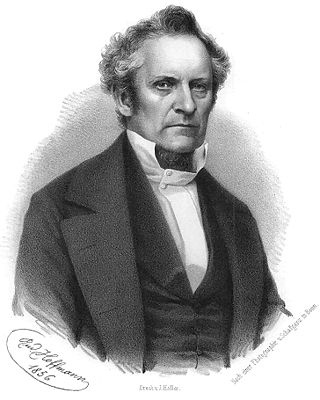Related Research Articles

A harpsichord is a musical instrument played by means of a keyboard. This activates a row of levers that turn a trigger mechanism that plucks one or more strings with a small plectrum made from quill or plastic. The strings are under tension on a soundboard, which is mounted in a wooden case; the soundboard amplifies the vibrations from the strings so that the listeners can hear it. Like a pipe organ, a harpsichord may have more than one keyboard manual, and even a pedal board. Harpsichords may also have stop buttons which add or remove additional octaves. Some harpsichords may have a buff stop, which brings a strip of buff leather or other material in contact with the strings, muting their sound to simulate the sound of a plucked lute.

In musical instrument classification, string instruments or chordophones, are musical instruments that produce sound from vibrating strings when a performer plays or sounds the strings in some manner.

Pizzicato is a playing technique that involves plucking the strings of a string instrument. The exact technique varies somewhat depending on the type of instrument:

Julius Plücker was a German mathematician and physicist. He made fundamental contributions to the field of analytical geometry and was a pioneer in the investigations of cathode rays that led eventually to the discovery of the electron. He also vastly extended the study of Lamé curves.

Green tea is a type of tea that is made from Camellia sinensis leaves and buds that have not undergone the same withering and oxidation process which is used to make oolong teas and black teas. Green tea originated in China, and since then its production and manufacture has spread to other countries in East Asia.

Angora hair or Angora fibre refers to the downy coat produced by the Angora rabbit. While the names of the source animals are similar, Angora fibre is distinct from mohair, which comes from the Angora goat. Angora fibre is also distinct from cashmere, which comes from the cashmere goat. Angora is known for its softness, thin fibres, and what knitters refer to as a halo (fluffiness). It is also known for its silky texture. It is much warmer and lighter than wool due to the hollow core of the angora fibre. It also gives the wool its characteristic floating feel.

The gayageum or kayagum is a traditional Korean musical instrument. It is a plucked zither with 12 strings, though some more recent variants have 18, 21 or 25 strings. It is probably the best known traditional Korean musical instrument. It is based on the Chinese guzheng and is similar to the Japanese koto, Mongolian yatga, Vietnamese đàn tranh, Sundanese kacapi and Kazakh jetigen.

The tanpura is a long-necked, plucked, four-stringed instrument originating in India, found in various forms in Indian music. Visually, the tanpura resembles a simplified sitar or similar lute-like instrument, and is likewise crafted out of a gourd or pumpkin.

Fingerstyle guitar is the technique of playing the guitar or bass guitar by plucking the strings directly with the fingertips, fingernails, or picks attached to fingers, as opposed to flatpicking. The term "fingerstyle" is something of a misnomer, since it is present in several different genres and styles of music—but mostly, because it involves a completely different technique, not just a "style" of playing, especially for the guitarist's picking/plucking hand. The term is often used synonymously with fingerpicking except in classical guitar circles, although fingerpicking can also refer to a specific tradition of folk, blues and country guitar playing in the US. The terms "fingerstyle" and "fingerpicking" are also applied to similar string instruments such as the banjo.

Mock duck is a gluten-based meat substitute. It is made of wheat gluten, oil, sugar, soy sauce, and salt, and is high in protein. Its distinctive flavor and artificial "plucked duck" texture distinguish it from other forms of commercially available gluten products. Mock duck is not meant to be eaten raw and needs to be prepared, usually by lightly frying in vegetable oil.

In glaciology, a roche moutonnée is a rock formation created by the passing of a glacier. The passage of glacial ice over underlying bedrock often results in asymmetric erosional forms as a result of abrasion on the "stoss" (upstream) side of the rock and plucking on the "lee" (downstream) side. Some geologists limit the term to features on scales of a metre to several hundred metres and refer to larger features as crag and tail.

Plucking, also referred to as quarrying, is a glacial phenomenon that is responsible for the weathering and erosion of pieces of bedrock, especially large "joint blocks". This occurs in a type of glacier called a "valley glacier". As a glacier moves down a valley, friction causes the basal ice of the glacier to melt and infiltrate joints (cracks) in the bedrock. The freezing and thawing action of the ice enlarges, widens, or causes further cracks in the bedrock as it changes volume across the ice/water phase transition, gradually loosening the rock between the joints. This produces large pieces of rock called joint blocks. Eventually these joint blocks come loose and become trapped in the glacier.
Pluck or plucking may refer to:

Plucking or tweezing can mean the process of human hair removal, removing animal hair or a bird's feathers by mechanically pulling the item from the owner's body. In humans, hair removal is done for personal grooming purposes, usually with tweezers. An epilator is a motorised hair plucker. Those under the influence of deliriants or trichotillomania may pluck their own hair out of habit.
Carl McVoy was an American pianist.
Damaso Munoz is a retired American gridiron football linebacker. He played college football for Rutgers. After spending 2010 training camp with the Chicago Bears,he played for the Edmonton Eskimos of the Canadian Football League from 2011 to 2013. He signed with the Buccaneers on February 19, 2014. He signed with the Ottawa Redblacks on September 15, 2014.

Darron Lee is a former American football linebacker. He played college football at Ohio State and was selected by the New York Jets in the first round of the 2016 NFL Draft. He was also a member of the Kansas City Chiefs, Buffalo Bills, and Las Vegas Raiders.
The 1929 Indiana Hoosiers football team represented the Indiana Hoosiers in the 1929 college football season as members of the Big Ten Conference. The Hoosiers played their home games at Memorial Stadium in Bloomington, Indiana. The team was coached by Harlan Page, in his fourth year as head coach. The 1929 Hoosiers compiled 2–6–1 record and finished in a tie for seventh place in the Big Ten.
The 1938 Miami Hurricanes football team represented the University of Miami as a member of the Southern Intercollegiate Athletic Association (SIAA) in the 1938 college football season. The Hurricanes played their home games at Burdine Stadium in Miami, Florida. The team was coached by Jack Harding, in his second year as head coach for the Hurricanes.
Francis Evans is an Australian rules footballer who plays for the Port Adelaide Football Club in the AFL. Nicknamed 'Frank the Tank,' Evans was drafted with pick 41 by the Geelong Football Club in the 2019 AFL Draft. Evans did not come from the traditional avenue to the AFL. He was plucked from Brunswick NOBS in the VAFA and was a surprise pick to all draft gurus. Evans made his AFL debut on 26 March 2021 in a round 2 clash with Brisbane at GMHBA Stadium.
References
- Lee Pluck at Soccerbase
